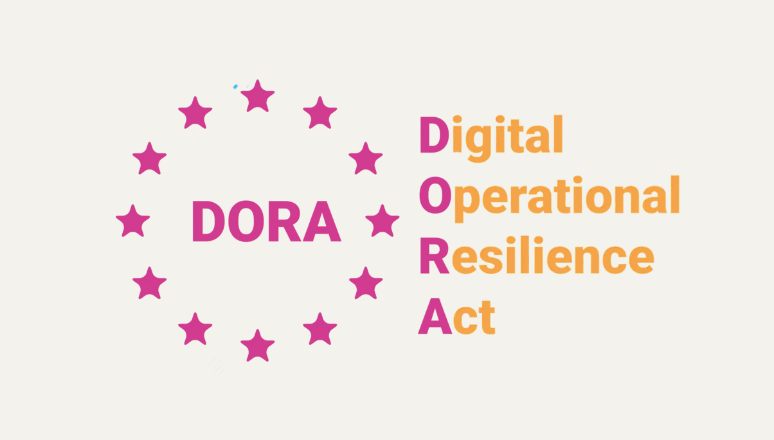back to blog
BLOG Nov 7 2025
Don’t Let European Union Aviation Safety Agency Security Catch You Off Guard
Victor De Luca

Table of Contents
The European Union Aviation Safety Agency (EASA) has introduced critical cybersecurity regulations for the aviation sector, mandating all aviation-related organizations implement an Information Security Management System (ISMS) to manage risks and protect safety. These regulations require organizations to systematically identify and assess cyber risks, treat unacceptable risks, detect and respond to incidents quickly, establish robust reporting schemes, and continuously improve their cybersecurity posture. Here’s how organizations can comply.

Europe’s aviation network is transforming through digitization. Aircraft now share real-time data across fleets, while predictive maintenance systems anticipate failures before they occur. Airports and air traffic services rely on interconnected platforms that synchronize flight planning, passenger management, and ground operations.
Europe’s aviation network is transforming through digitization. Aircraft now share real-time data across fleets, while predictive maintenance systems anticipate failures before they occur. Airports and air traffic services rely on interconnected platforms that synchronize flight planning, passenger management, and ground operations.
Specifically, organizations must comply with the following regulations:
- Commission Delegated Regulation (EU) 2022/1645, which took effect on October 16, 2025, establishes rules for managing information security risks with the potential to impact aviation safety. It mandates the implementation of an Information Security Management System (ISMS), risk assessments, incident reporting, and continuous cybersecurity improvement tailored to the aviation sector.
- Commission Implementing Regulation (EU) 2023/203, coming into effect on February 22, 2026, complements these requirements, setting out further technical and organizational measures to protect information and communication technology systems critical to aviation safety.
These regulations ensure a consistent and high level of cyber resilience across all actors in the European aviation sector, addressing challenges from complex connected systems to emerging cyber threats while maintaining operational safety and compliance.
If your organization is in aviation, the countdown to compliance is underway. This does not just apply to airlines themselves, or manufacturers, but a host of organizations within the aviation industry, including:
- Airport operators
- Air navigation service providers
- Maintenance organizations
- Continuing airworthiness management organizations (CAMOs)
- Aircraft manufacturing and design organizations
- Air traffic controller training organizations
Tackling new security mandates can seem daunting, but there are smart ways to make the journey easier. Many aviation adjacent organizations overlook how modern, proactive exposure management platforms such as Nagomi can fast-track readiness by bringing together your asset inventory, controls, and active threats into a single, control-first view of risk that matches EASA’s security requirements.
Let’s walk through how Nagomi can help you satisfy all five areas of the EASA framework, helping you achieve compliance with confidence.
EASA’s Security Blueprint: What You Need to Know
EASA’s new regulations center on two pillars:
- Delegated Regulation (EU) 2022/1645
- Implementing Regulation (EU) 2023/203
What does this mean for you? Simply put, aviation organizations need to build a formal Information Security Management System (ISMS) that fits their operations and reports directly into overall governance. The framework highlights five focus areas:
1. Risk Identification and Management
Organizations must establish an ISMS to identify and review information security risks. This involves conducting a thorough risk assessment to identify all internal elements (activities, facilities, systems, data) and external interfaces that could be exposed. Each identified risk must be assigned a level based on the potential of the threat scenario and the severity of its safety consequences.
2. Treatment of Unacceptable Risks
For risks deemed unacceptable, organizations are required to develop, implement, and continuously monitor the effectiveness of risk treatment measures. These measures should aim to control the circumstances of a threat, reduce its safety consequences, or avoid the risk entirely.
3. Detection, Response, and Recovery
A critical operational component of the ISMS is the implementation of measures to detect information security events, particularly those indicating unacceptable risks. Following detection, organizations must have established measures to respond to and contain incidents, and to recover from them, restoring safe operations within a predefined time.
4. Establishment of Reporting Schemes
Organizations must implement both internal and external reporting schemes. An internal scheme is required to collect and evaluate information security events and vulnerabilities. An external scheme must be implemented to report significant incidents or vulnerabilities to the competent authority and, where applicable, to the relevant design approval holder.
5. Continuous Improvement
The ISMS is a dynamic system requiring a continuous improvement process. Organizations must regularly assess the effectiveness and maturity of the ISMS using performance indicators and make necessary improvements when deficiencies are found. This ensures the ISMS remains effective and proportionate to the organization’s activities.
How Nagomi Makes EASA Compliance Easier
Nagomi’s Proactive Defense Platform lightens the compliance load and boosts your cyber resilience by automating, integrating, and streamlining ISMS processes. Here’s how it helps with each EASA requirement:
1. Smarter Risk Management
Building a true understanding of risk is tough, especially when tools are siloed and visibility is patchy. Nagomi makes it easier by:
- Integrating seamlessly with your existing security tools to provide a unified, comprehensive view of your assets and controls.
- Connecting controls, vulnerability, threat, and business context so you see what is exposed, what is critical, and why it matters.
- Mapping automatically to frameworks such as MITRE ATT&CK, NIST, and CIS so risks are prioritized as soon as they are identified.
By combining these sources, Exposure Lens ensures that prioritization reflects reality, not static vulnerability scores or siloed findings. It gives teams a dynamic view of their environment, grounded in both what they own and what’s happening in the wild.
2. Proactive, Actionable Outcomes
Nagomi helps you move quickly from identifying risks to resolving them, with:
- Actionable remediation guidance: Know what needs to be fixed, why it matters, and who is responsible.
- Automated validation: Continuous checks in order to confirm your controls are working as intended.
- Optimization: Uncovering misconfigurations to identify gaps and subsequently maximize the value of your current security investments.
3. Detection, Response, and Rapid Recovery
A fast and effective response is critical to save time and reputation. Nagomi supports this by:
- Continuous assessments that spot misconfigurations and active threats immediately.
- Shifting attention to threats attackers are actively exploiting right now.
- Embedding workflow guidance that lets teams respond quickly and effectively.
This flexibility helps security teams move from generic prioritization to business-aligned action. They can plan remediation, assign ownership, and demonstrate measurable progress, based on what truly affects the organization’s most valuable assets.
4. Reporting That Is Actually Useful
Reporting does not have to be a bottleneck. Nagomi enables:
- Centralized security insights for fast, accurate reporting using easily digestible data.
- Context-rich analysis to communicate clearly with both regulators, design authorities.
- Root cause analysis that uncovers vulnerabilities, making both internal and external reporting easier.
5. A Path to Continuous Improvement
Nagomi empowers your ISMS to stay sharp, dynamic, and ready for future challenges:
- Automated dashboards to display exposure trends, control effectiveness, and risk reduction by business unit.
- Progress benchmarking against industry standards such as NIST and CIS.
- Demonstration of maturity and impact for your board, and or regulators so you show a holistic view of program strength, not just issue closure.
Landing Compliance with Confidence
Securing aviation in today’s threat landscape is no small task, but you do not have to go it alone. EASA’s regulations demand a smarter, more resilient approach to information security, and with Nagomi’s unified platform supporting you every step of the way, you can meet these standards with confidence.
Are you ready for takeoff? With deadlines upon us, let Nagomi help you achieve compliance and keep your security program flying high.



